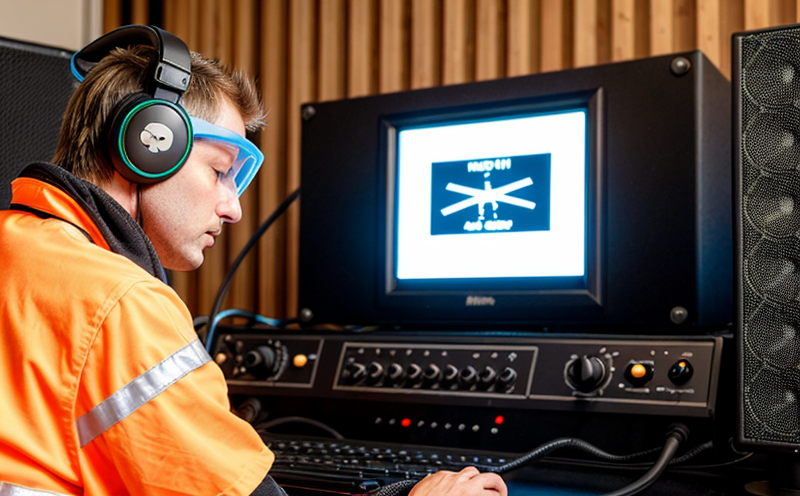EN 71-1 Hand-Held Toy Noise Level Testing
The European Standard EN 71-1 is a cornerstone in ensuring that toys are safe and suitable for children. This standard specifically addresses physical, mechanical, chemical, flammability, and other aspects of toy safety. One critical component within this standard pertains to the noise level emitted by hand-held toys, which can pose significant risks if not adequately controlled.
Noise-induced hearing damage is a serious concern, especially for children who are more susceptible due to their developing auditory systems. Hand-held toys that produce excessive sound levels may inadvertently cause harm through prolonged or frequent use. The objective of EN 71-1 noise testing is thus to establish safe limits and ensure compliance with these regulations.
The test procedure outlined in EN 71-1 involves the measurement of the maximum sound pressure level (SPL) emitted by a toy over a specific duration when it is operated as intended. This SPL is measured at a distance of 250 mm from the toy's surface, and the operator must simulate typical use conditions. The standard specifies a reference level beyond which toys are considered hazardous.
To conduct this test accurately, specialized equipment such as sound pressure microphones calibrated to BSEN ISO 3745:1998 is essential. A sound level meter capable of integrating over the specified time period and displaying SPL in decibels (dB) is also required. The setup must be conducted under controlled environmental conditions to ensure consistent results.
Sample preparation for this test involves ensuring that all parts of the toy are assembled correctly as per manufacturer instructions, including any removable components or accessories. Testing should follow a standard sequence to minimize variability in measurement. It's crucial to note that the testing procedure is not just about measuring sound levels but also understanding how children might interact with toys and the potential risks associated with prolonged exposure.
The acceptance criteria for this test are based on the maximum SPL allowed by EN 71-1, which varies depending on the age group of the intended users. For instance, toys designed for children under three years old have stricter limits than those aimed at older children. Compliance is determined through detailed documentation and reporting that includes all relevant measurements and a statement of conformance.
Non-compliance with these standards can lead to product recalls, legal action, and damage to the manufacturer's reputation. Therefore, thorough testing and compliance are not just regulatory requirements but also essential for maintaining brand integrity and ensuring consumer safety.
Why It Matters
The importance of EN 71-1 noise level testing cannot be overstated in the toy manufacturing industry. The primary objective is to protect children from potential hearing damage caused by excessive sound levels from hand-held toys. This standard ensures that toys are not only safe but also appropriate for their intended age group.
- Prevention of Hearing Damage: Excessive noise can lead to permanent hearing loss, especially in young children whose auditory systems are still developing.
- Legal Compliance: Non-compliance with EN 71-1 can result in product recalls and severe financial penalties.
- Consumer Trust: Ensuring compliance enhances consumer confidence in the safety of toys, which is vital for brand reputation.
- Safety Assurance: By adhering to this standard, manufacturers demonstrate a commitment to child safety, which is paramount in the toy industry.
The consequences of non-compliance can be severe. Regulatory bodies like the European Commission and national authorities closely monitor market compliance with these standards. Failure to meet them could lead to product bans or withdrawals from the market. Additionally, non-conforming products may face legal challenges, which can be costly and damaging to a company's reputation.
In summary, EN 71-1 noise level testing is not merely an obligatory task but a critical step in safeguarding children’s health and well-being while maintaining industry standards and consumer trust.
Industry Applications
- Toymakers: Ensuring toys meet noise level limits is crucial for compliance with international safety regulations, thereby protecting the brand's reputation and avoiding legal issues.
- R&D Engineers: Testing different prototypes under various conditions helps in refining product designs to ensure they are safe and comply with standards like EN 71-1.
- Quality Managers: Regular testing is essential for maintaining consistent quality control, ensuring that all products meet the specified noise level limits before mass production begins.
- Safety Auditors: Auditing compliance ensures that manufacturers are adhering to safety standards and can provide evidence of this during inspections.
The application of EN 71-1 extends beyond toy manufacturing. It also applies to related industries such as children's clothing, educational materials, and any products intended for use by young children where noise levels could be a concern. This standard serves as an integral part of the broader safety framework that ensures toys are not only safe but also appropriate for their intended age group.
Customer Impact and Satisfaction
The implementation of EN 71-1 noise level testing has a direct impact on customer satisfaction by ensuring that products meet or exceed safety standards. Parents, guardians, and other caregivers are reassured knowing that the toys they purchase for their children adhere to rigorous safety measures. This trust in product safety can lead to increased brand loyalty and positive word-of-mouth recommendations.
- Increased Trust: Compliance with EN 71-1 instills confidence among parents, which translates into higher customer satisfaction.
- Better Product Perception: Toys that comply with safety standards are perceived as safer and more reliable, enhancing the overall product image.
- Enhanced Reputation: Demonstrating commitment to child safety can significantly boost a company's reputation in the marketplace.
- Customer Retention: Satisfied customers are more likely to repurchase from the same brand or recommend it to others, fostering long-term relationships.
Furthermore, compliance with these standards helps avoid negative publicity and potential legal actions. By adhering to safety regulations, manufacturers can prevent recalls and associated costs while maintaining a positive public image. This proactive approach not only protects consumers but also strengthens the manufacturer's position in the market.





